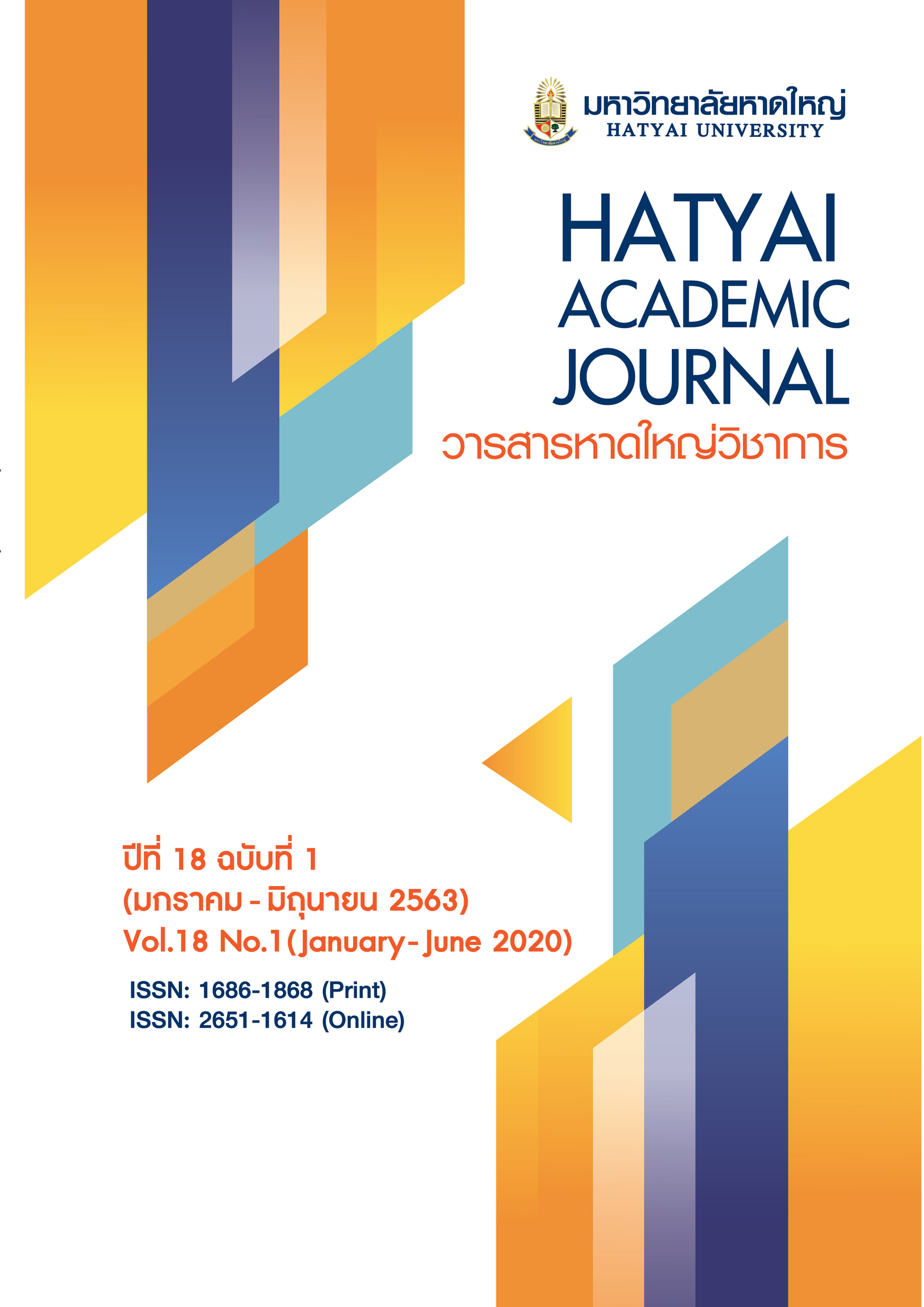The Development of E-Commerce Systems for Products Management of Suchawadee Community Enterprise in Prik, Sadao District, Songkhla Province
Main Article Content
Abstract
The objectives of this research were to 1) examine the requirements to develop e-commerce systems for products management of Suchawadee Community Enterprise [SCE], 2) enhance e-commerce systems for products management of the enterprise, 3) investigate the satisfaction on e-commerce systems for products management of the enterprise, and 4) compare the satisfaction of using an e-commerce website categorized by individual factors.
The data collection was conducted by interviewing seven committees of SCE to study the requirements for the development of e-commerce systems. It also included 400 copies of the questionnaire for the satisfaction of e-commerce systems website users. The data were analyzed via Content Analysis and the statistics comprising of frequency, percentage, mean, standard deviation, t-test, and F-test with the Multiple Comparison and the Least Significant Difference (LSD) test. The findings indicated as follows:
1) Suchawadee Community Enterprise needed the development of e-commerce systems for introducing products, publicizing, and increasing the channel of product distribution among national and international customers. The enterprise can serve the purchase orders because their products have already been stocked for distribution. Moreover, it is the conservation of local wisdom from the local herbs for the next generation. 2) The e-commerce systems for product management of SCE was www.otopsuchawadee.com. It is comprised of the front-end system on which the customer can check details of products purchases and the back-end system over which the system administrators were in charge of operating various data on operation. 3) Satisfaction with e-commerce systems for SCE products management was at a high level overall, with an average of 3.56. The website had a well-defined name, was user-friendly, accessible, fast with information searches, and available in a contact channel. The format of its product introduction was outstanding and interesting. The color and size of fonts were legible, and the beauty of website design was at a high level. And 4) Satisfaction with using the e-commerce website was categorized by individual factors represented that the users of website for products management of SCE with a difference of age, educational level, and occupation had a difference of satisfaction using the e-commerce website at .05 level of statistical significance, and the users of the website for products management had a difference by sex, income per month, and purchasing frequency had no difference of satisfaction using the e-commerce website. Users of websites under the age of 20 years and 20-30 years of age are more satisfied with the use of the website, compared with users of websites aged 51 years and over. The most satisfied users are students/undergraduates, and a personal business career which can be used to make use of online marketing planning target group penetration promoting products in consumer groups that are interested in the needs of consumers quickly and precisely to increase the opportunity to sell more products.
Article Details
All published articles are evaluated by three qualified peer reviewers from various institutions through a double-blind process, where reviewers do not know the authors’ identities and authors do not know the reviewers’ identities. The content and articles in the Hatyai Academic Journal reflect the authors’ views only and are neither the opinions of the editorial board nor the responsibility of Hatyai University. The Editorial Board of the Hatyai Academic Journal allows articles to be reproduced for academic purposes, on the condition that the original source is clearly cited.
References
Bangmo, S. (2008). Organization and management (5th ed.). Bangkok: Wittayaphat. [in Thai]
Boon-aon, A. (2010). Development of e-commerce prototype for OCC public company limited (Master’s thesis). Silpakorn University, Bangkok. [in Thai]
Chaipunya, P. (1998). Farmers’ satisfaction on mixed farming activities under agriculture restructuring and production system project adjustment, Chiang Rai Province (Master’s thesis). Chiang Mai University, Chiang Mai. [in Thai]
Chaitirasakul, J., & Gulid, N. (2013). Factors affecting using behavior for E-Commerce of internet users. Srinakharinwirot Business Journal, 4(1), 18-34. [in Thai]
Kanjanasuwan, T. (2009). E-Commerce. Bangkok: KTP Comp & Consult. [in Thai]
Kiadrasamee, J. (2015). Factor affecting the decision making on purchasing products from the online application in bangkok metropolitan region (Master’s thesis). Thammasat University, Bangkok. [in Thai]
Kittidechanuparb, P. (2006). OS commerce. Bangkok: Innovation Media Printing. [in Thai]
Kraisanti, K., & Kumsri, R. (2015). Management potential of Suchawadee Community Enterprise in Prik, Sadao District, Songkhla (Research report). Songkhla: Hatyai University. [in Thai]
Laudon, K. C., & Traver, C. G. (2007). E-Commerce: Business technology society (3rd ed.). New Jersey: Pearson Prentice Hill.
Paosuwan, K., Patchim, T., & Chaypanya, S. (2007). Expectation and satisfaction of studying at Suan Dusit Rajabhat University Phitsanulok Center (Research report). Bangkok: Suan Dusit Rajabhat University. [in Thai]
Pongthongmueng, J. (2012). Web Design. Retrieved from http://www.gotoknow.org/posts/190393 [in Thai]
Turban, E., & King, D. (2008). Electronic commerce 2008 (A material perspective). New Jersey: Pearson Prentice Hill.
Wiratnipawan, W. (2007). Management according to the moral guidelines and the sufficiency economy guidelines. Bangkok: SE-EDUCATION Public Company. [in Thai]

